Treatment of Gum Disease
Non-surgical Treatment of Periodontal Disease & Gingivitis
First the “easy” steps in the treatment of gum disease are:
- Improved daily home care.
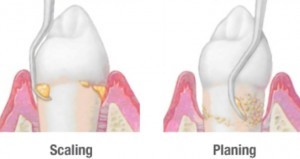
Root Planning Scaling for Gum Disease
Periodontal scaling (inaccurately called “deep cleaning”)–If the periodontal pockets are deeper than 4 mm. the bacteria will not be able to be removed by the patient and the gum disease will progress. The dentist or dental hygienist must intervene by anesthetizing the gums and removing the deeper bacterial deposits and calcified deposits with special instruments. Healing is usually very easy and is the first step in controlling advanced periodontal disease.
- Anti-microbial rinses as recommended by dental professionals.
- Anti-microbial agents that can also be directly inserted into the deeper periodontal pockets (several types are available) to help in the healing phase after periodontal scaling.
- Elimination of the factors that impede daily bacterial plaque removal such as tooth crowding, faulty or old dental restorations, dental decay, bridges or partial dentures.
- Immediate extraction of hopeless teeth that cannot be saved.
- Reduction of the biting (occlusal) forces on the remaining teeth. Bone loss accelerates if excessive biting forces overwhelm the tooth support with bone loss from gum disease.
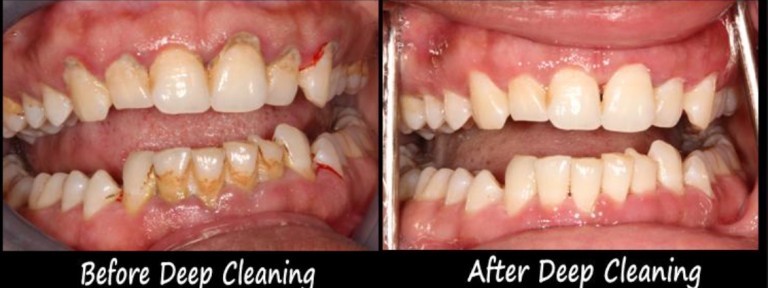
Deep Cleaning for Gum Disease
Surgical Treatment of Periodontal Disease
If more advanced interventions are required:
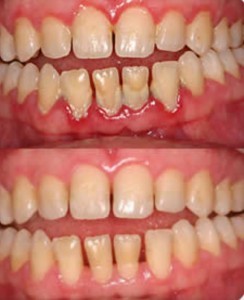
Treatment of Gum Disease
Surgical therapy to remove deep periodontal pockets, often with the use bone grafting procedures to help “heal” the bone loss with advanced periodontal gum disease.
- Temporary or permanent replacement of missing teeth with dental implants, bridges, or partial dentures for an improved “per tooth” distribution of biting forces.
- Antimicrobial agents may help in healing systemically, by rinses, or directly placed into deeper periodontal pockets.
- Ultimately teeth broken down by advanced dental decay must be repaired with restorations or crowns so the bacteria doesn’t accumulate. If teeth are lost they should be replaced by dental implants, permanent or temporary partial dentures, or dental bridges before the disease advances and compromises the remaining teeth.
- If the periodontal pockets become too deep the gums may need to be moved down the root surface in a procedure known as “flap surgery.” The tooth may appear longer, and root sensitivity may occur. It is considered to a “last resort” procedure when conservative treatment does not control the disease.
- If the periodontal destroys too much of the bone supporting the teeth, the gums may be “flapped” off the bone, and deep areas around the the bacterial deposits (calculus or tarter) be removed. The bone lost in theses advanced cases can sometimes be “re-grown” with regenerative bone grafting materials. Bone grafting has progressed recently and is also used in implant surgery. Regeneration is preferred to removal of gum tissue.
- Regeneration of lost bone –Periodontal Bone Grafting
- Destruction of too much tooth support will require tooth removal and implant placement.–See our section on Dental Implants
- Bone Regeneration-Gum Disease
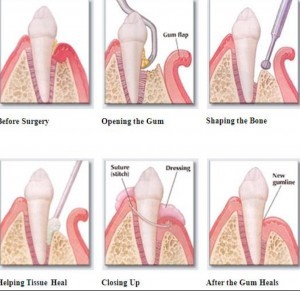
Removal of Gums to Reduce Periodontal Pockets
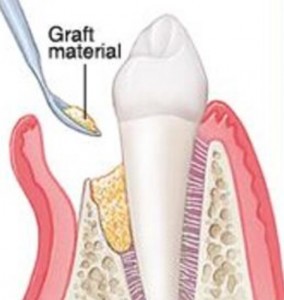
Graft material
Check Up
Make an Appointment Today!
Need a Smile Makeover, full mouth reconstruction or cosmetic procedure like veneers or crowns? Set up an appointment now without picking up the phone.
Hours
Monday: 11am – 8pm
Tuesday: 10am – 7pm
Wednesday: 8am – 4pm
Thursday: 7am – 3pm
Friday: Closed
Saturday: Closed
Sunday: Closed
